Overview of Dental Implant Post-Op Recovery
Dental implant recovery involves healing of bone and gum tissue, typically taking 3-6 months. Proper care ensures optimal results, with the first few weeks being critical.
1.1 Importance of Following Instructions
Adhering to post-op instructions is crucial for proper healing and implant success. Failure to follow guidelines can lead to complications, such as infection or implant failure. Proper care ensures the implant integrates with the jawbone effectively. Patients must avoid smoking, strenuous activities, and certain foods to promote healing. Following instructions also minimizes discomfort and reduces recovery time. Ignoring advice may prolong healing or cause unnecessary setbacks. Strict adherence ensures optimal results and long-term implant functionality, making it essential to prioritize post-operative care diligently.

1.2 Timeline for Healing and Recovery
The healing process after dental implant surgery typically spans several months. The first 24-48 hours involve managing swelling and bleeding. Within 1-2 weeks, the initial healing phase begins, with soft tissues stabilizing. Bone integration, or osseointegration, occurs over 3-6 months. During this time, patients gradually transition to softer foods. Full recovery and restoration with a crown or bridge usually take 6-12 months. Strict adherence to post-op care accelerates healing, while deviations may extend the timeline. Regular follow-ups ensure progress and address any concerns promptly.

Immediate Post-Surgery Care
After implant surgery, monitor bleeding, apply ice packs to reduce swelling, and avoid spitting or using straws for 24 hours. Keep the surgical area clean.
2.1 Managing Bleeding and Swelling
Bleeding after dental implant surgery is normal and may last several hours. Apply gentle pressure with gauze for 30 minutes. Use cool compresses or ice packs on the cheek to reduce swelling. Avoid spitting, rinsing, or using straws for 24 hours, as this can dislodge clots. If bleeding persists or increases, contact your dentist promptly. Swelling typically peaks within 24-48 hours and subsides gradually.
2.2 Using Ice Packs and Compression
Apply ice packs or cold compresses to the cheek or jaw area near the surgical site to reduce swelling and discomfort. Use them intermittently, such as 15-20 minutes on and 15-20 minutes off, for the first day or two. Avoid direct contact with the skin for extended periods to prevent tissue damage. Compression, like gentle pressure with a cold pack, can help minimize swelling and aid in healing. This step is most effective within the first 24 hours after surgery.
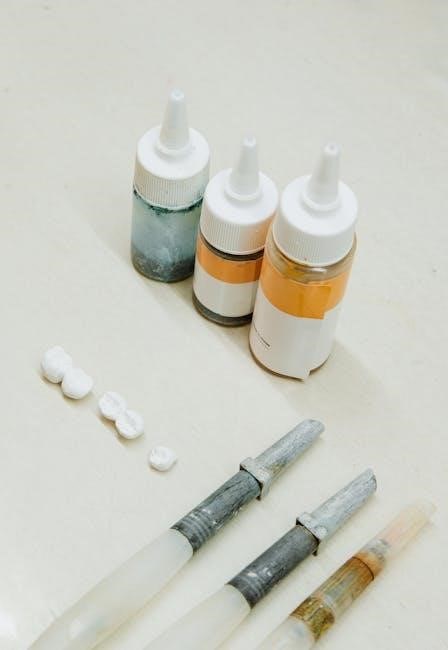
Pain Management
Apply ice packs or cold compresses to the cheek or jaw area near the surgical site to reduce swelling and discomfort. Use them intermittently, such as 15-20 minutes on and 15-20 minutes off, for the first day or two. Avoid direct contact with the skin for extended periods to prevent tissue damage. Compression, like gentle pressure with a cold pack, can help minimize swelling and aid in healing. This step is most effective within the first 24 hours after surgery.
3.1 Prescribed Medications and Dosage
Your dentist may prescribe pain relievers or antibiotics post-surgery. Take medications as directed to manage discomfort and prevent infection. Painkillers should be started immediately, following the dosage instructions. Antibiotics, if prescribed, are crucial for preventing infection and should be taken until the course is completed. Always follow the recommended dosage and consult your dentist if side effects occur or if pain persists beyond the expected recovery period.
3.2 Non-Prescription Pain Relief Options
For mild to moderate discomfort, over-the-counter pain relievers like ibuprofen or naproxen can be effective. These anti-inflammatory medications help reduce swelling and alleviate pain. Always follow the recommended dosage on the label or as advised by your dentist. Start with a low dose if needed, and avoid exceeding the maximum daily limit to prevent side effects. If pain persists or worsens, consult your dentist for further guidance or stronger prescription options.

Dietary Recommendations
Stick to soft, bland foods like yogurt, mashed potatoes, and soups for the first few weeks. Avoid hard, crunchy, or chewy foods to support healing and prevent complications;
4.1 Soft Food Options for the First Few Weeks
After dental implant surgery, focus on soft, nutrient-rich foods to minimize discomfort and support healing. Opt for yogurt, scrambled eggs, mashed vegetables, and cooked pasta. These options are gentle on the mouth and reduce strain on the surgical site. Incorporate smoothies or pureed soups for essential vitamins and minerals. Avoid hot foods initially, as they may irritate the area. Sticking to a soft diet for the first few weeks helps prevent complications and promotes a smoother recovery process.
4.2 Avoiding Hard, Crunchy, or Chewy Foods
Avoiding hard, crunchy, or chewy foods is crucial during the healing period. Foods like nuts, chips, and tough meats can dislodge the implant or irritate the surgical site. Similarly, chewy foods such as caramel or gum should be avoided as they can strain the area. This precaution typically lasts 8 weeks, allowing the bone and tissue to heal properly. Opt for soft, easy-to-chew alternatives to ensure the implants integrate successfully without complications. Cutting food into small, manageable pieces can also help minimize discomfort and risk.
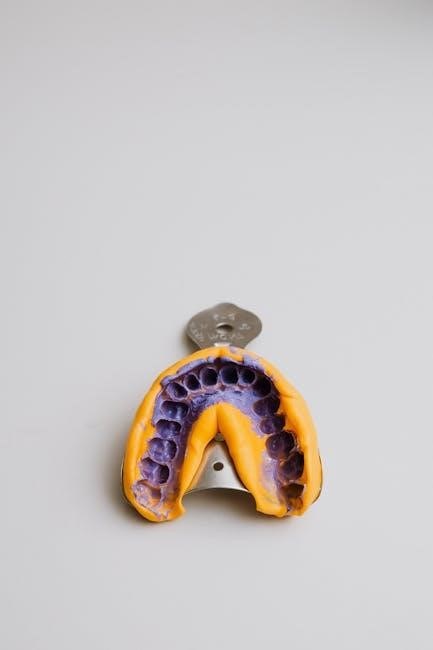
Oral Hygiene Practices
Maintaining proper oral hygiene is essential for implant healing. Gently clean the area with a soft toothbrush and rinse with saline or antibacterial mouthwash as directed.
5.1 Rinsing Techniques and Frequency
Begin rinsing gently 24 hours post-surgery with warm salt water or prescribed mouthwash after meals and before bed. Avoid vigorous swishing or spitting, which could dislodge the blood clot. For the first week, rinse 2-3 times daily to keep the surgical site clean. Use a soft-bristled toothbrush to clean around the implant, but avoid direct contact with the surgical area. Continue rinsing as directed to promote healing and prevent infection. Do not use harsh mouthwashes unless recommended by your dentist. Maintain this routine to ensure proper healing and implant stability.
5.2 Gentle Cleaning of the Surgical Site
After 24 hours, gently clean the surgical area with a soft-bristled toothbrush and mild toothpaste. Avoid scrubbing directly over the implant site. Instead, clean around it carefully. Use salt water or a prescribed mouthwash to rinse the area, ensuring no debris accumulates. Do not use harsh mouthwashes unless advised by your dentist; Continue this gentle cleaning routine to promote healing without irritating the tissues. Avoid touching the implant or surgical site with your fingers or tongue to prevent infection and support proper recovery.
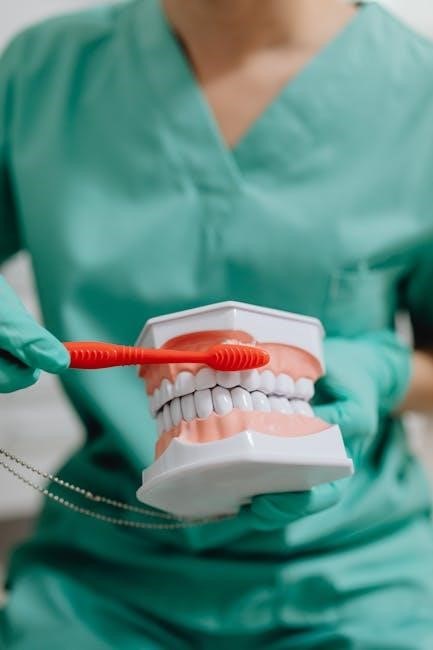
Activity Level and Rest
Rest is crucial for healing. Avoid strenuous activities for 48-72 hours post-surgery. Limit physical exertion to prevent swelling and ensure proper recovery of the implant site.
6.1 Avoiding Strenuous Activities
Avoiding strenuous activities is vital during the initial healing phase after dental implant surgery. Heavy lifting, bending, or intense exercise can dislodge the blood clot or damage the surgical site. This can lead to complications such as bleeding, swelling, or prolonged recovery. Patients should refrain from vigorous physical activities for at least 48-72 hours post-procedure. Even after this period, it’s important to gradually resume normal activities to protect the implant site. Resting and minimizing exertion helps ensure proper healing and stability of the implant.
6.2 Importance of Rest for Healing
Rest is crucial for proper healing after dental implant surgery. Allowing your body to recover reduces the risk of complications like bleeding or swelling. Avoiding physical strain ensures the implant site heals undisturbed, promoting bone integration. Patients should prioritize relaxation, avoid heavy exertion, and get adequate sleep. This helps the body recover efficiently, ensuring the implant fuses correctly with the jawbone for a stable, long-lasting result. Resting appropriately supports overall recovery and minimizes the chance of post-surgical issues.
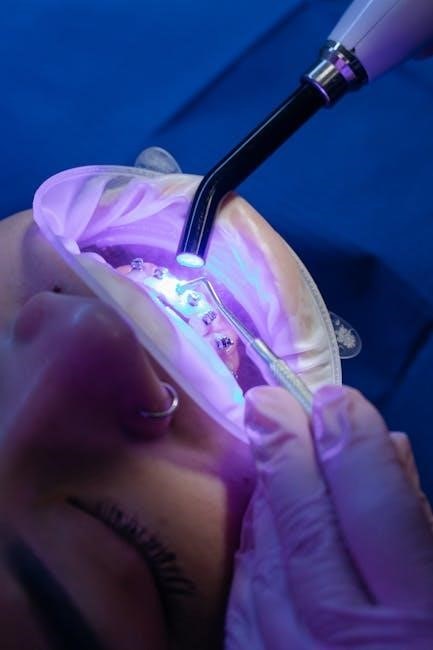
Follow-Up Care
Regular follow-up appointments ensure proper healing and implant integration. Your dentist monitors progress, removes sutures, and addresses any concerns, promoting a successful recovery and outcome.
7.1 Monitoring for Complications
After dental implant surgery, your dentist will monitor for signs of complications such as infection, implant failure, or nerve damage. Regular check-ups help identify issues early, ensuring timely intervention. Monitoring includes assessing the implant’s stability and the healing progress of surrounding tissues. Any unusual symptoms, like prolonged pain or swelling, should be reported immediately. Early detection of complications can prevent more serious problems and ensure the success of the implant procedure.
7.2 Scheduling Post-Op Appointments
Scheduling post-operative appointments is crucial for ensuring proper healing and implant success. Your dentist will typically recommend a series of follow-ups to monitor the healing progress, check implant integration, and address any concerns. Initial appointments may occur within the first few weeks, with additional visits scheduled over the next few months. These check-ups allow your dentist to assess tissue healing, confirm implant stability, and ensure no complications arise. Regular attendance at these appointments is vital for achieving optimal results and maintaining the longevity of your dental implants.
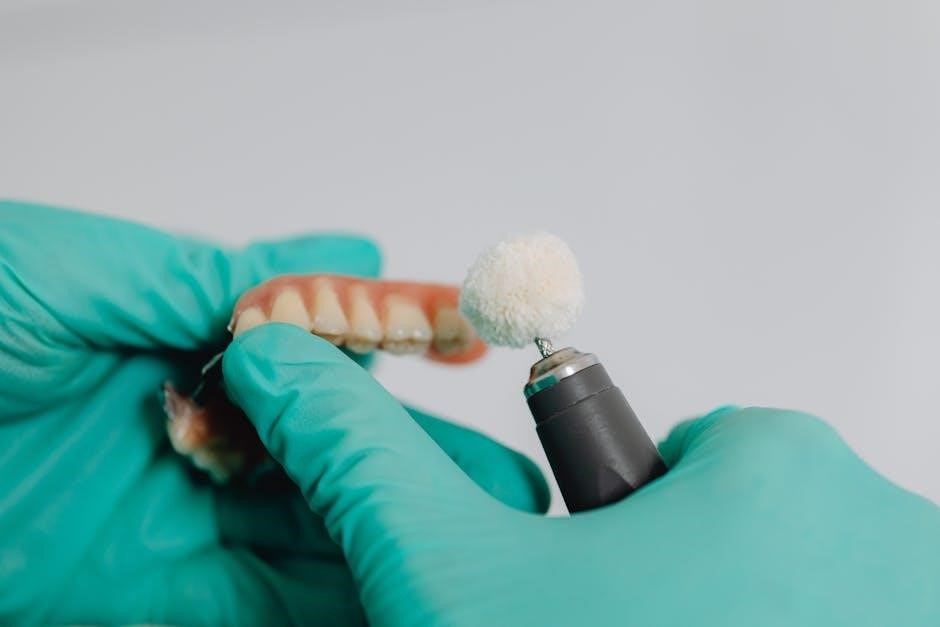
Long-Term Care and Maintenance
Regular dental check-ups and proper oral hygiene are essential for implant longevity. Avoid smoking, chewing on hard objects, and maintain a balanced diet for lasting results.
8.1 Maintaining Oral Hygiene for Implant Longevity
Proper oral hygiene is vital for the longevity of dental implants. Brush gently with a soft-bristle toothbrush and fluoride toothpaste, focusing on the implant area. Use interdental brushes or floss to clean between implants and surrounding teeth. Avoid using abrasive products that could scratch the implant surface. Regularly rinsing with antibacterial mouthwash can help reduce plaque and bacteria. Smoking and chewing on hard objects should be avoided to prevent damage. Consistent hygiene practices ensure implants remain stable and functional for years.
8.2 Regular Dental Check-Ups
Regular dental check-ups are crucial for ensuring the long-term success of dental implants. Schedule appointments every 3-6 months to monitor healing and implant integration. During these visits, your dentist will examine the implant, take X-rays to assess bone health, and clean around the implant to prevent plaque buildup. These check-ups help identify potential issues early, such as loose implants or gum inflammation. Consistent dental care ensures implants remain stable and functional, supporting overall oral health and preventing complications.